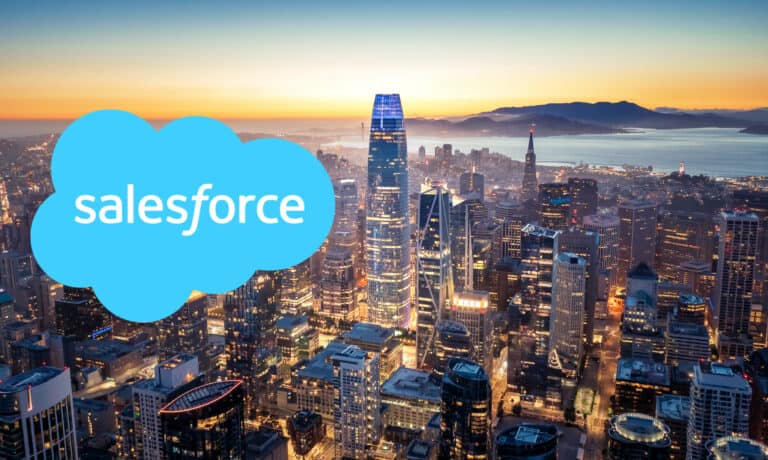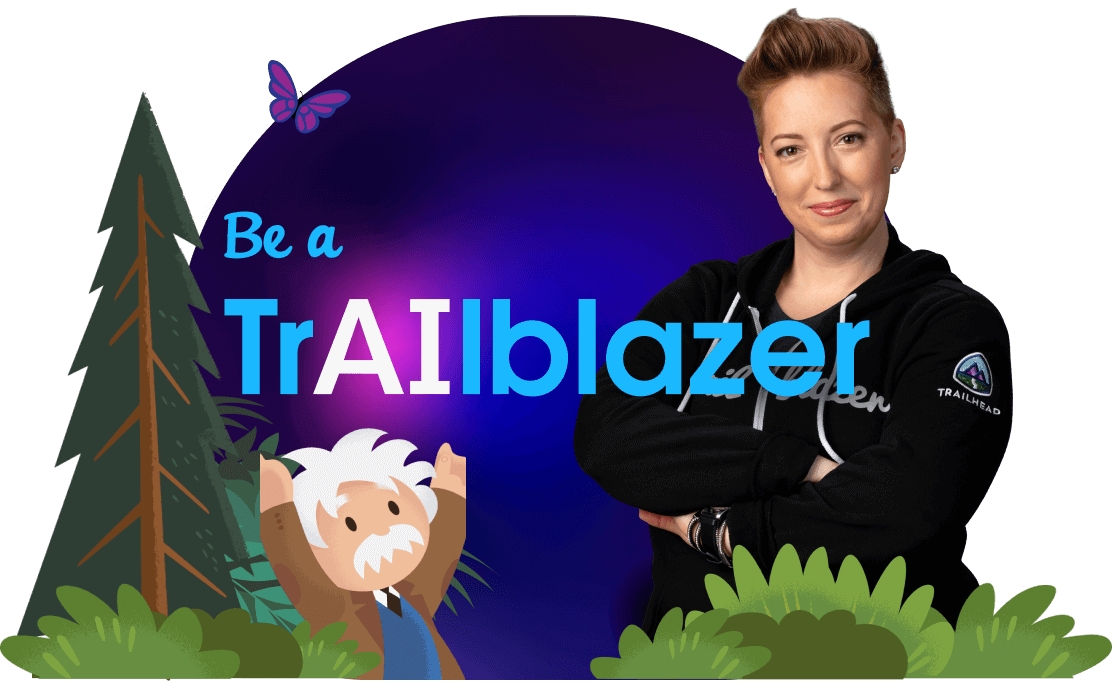On March 8, 1999, Sales Force Automation was founded. The company that would later go through life as Salesforce.com and eventually Salesforce. In 25 years, it has grown into one of the largest companies in the world.
Salesforce began not in a garage like many tech companies but in a one-bedroom apartment on Telegraph Hill in San Francisco. The vision was to disrupt enterprise software by putting the Internet at the center. Salesforce wanted to be one of the first, just like NetSuite, to offer software only over the Internet. We call it software-as-a-service (SaaS) now, but that term had yet to be invented.
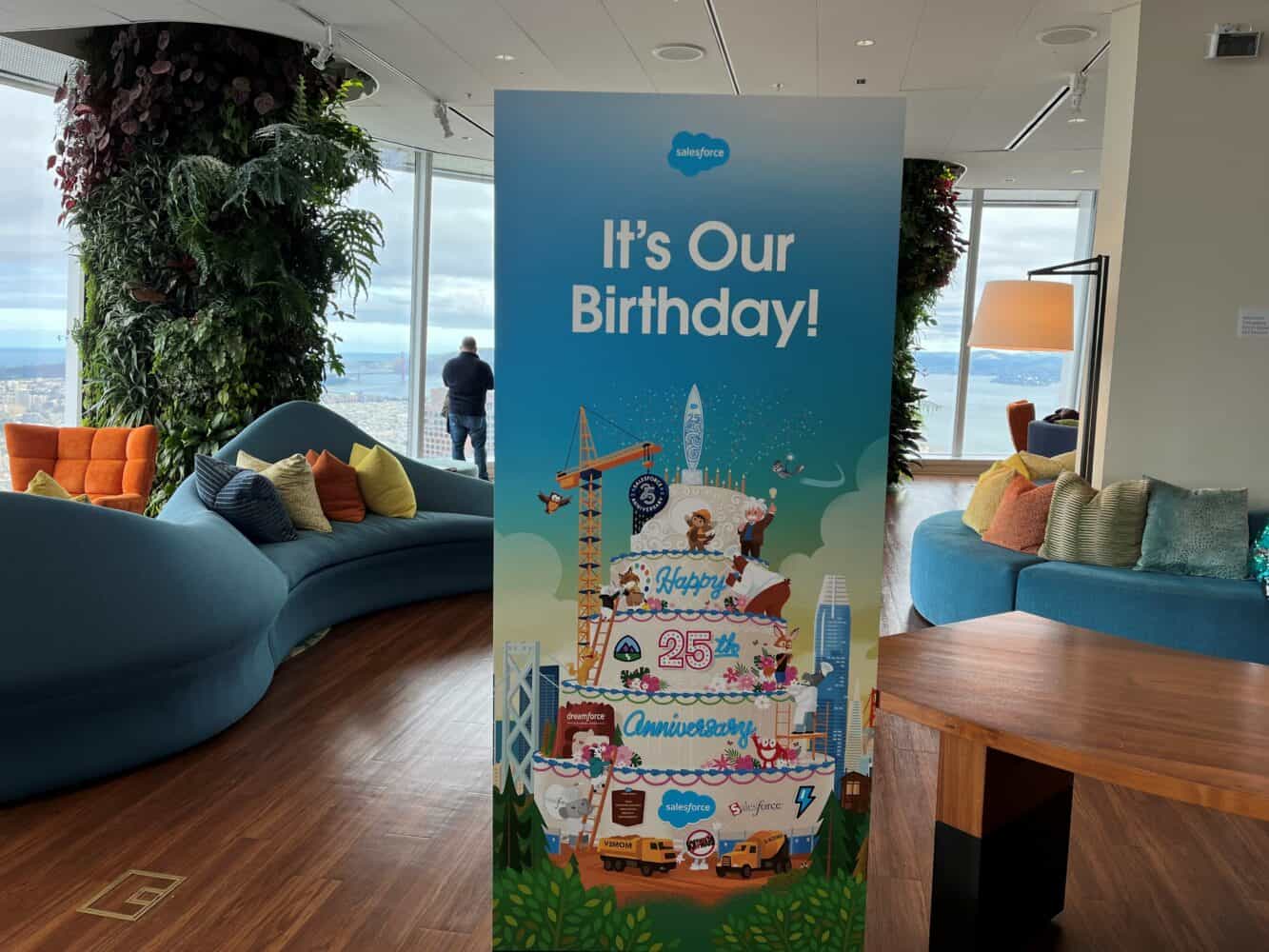
Salesforce grows to 40 employees within first year
In July 1999, Salesforce already had 10 employees and opened a 750-square-meter office in San Francisco. The real estate in San Francisco was affordable back then. Later that year, Marc Benioff presented the first prototype of the sales automation software. The price tag was set at $50 per user per month for small and medium-sized businesses. By December, Salesforce had already grown to 40 employees.
In the year 2000, Salesforce launched an “end-the-software” marketing campaign, putting itself in the spotlight through guerrilla marketing. During a Siebel Systems conference, Salesforce hired actors to protest against software. This eventually resulted in an article in The Wall Street Journal and, with it, many new customers. Also in 2000, the first version of Salesforce CRM appeared.
Salesforce presents the 1-1-1 model in 2001
In 2001, Salesforce presented the 1-1-1 model, a model that is still very special today. Salesforce annually donates 1% of equity or profits, 1% of staff time and 1% of products to the community.
This allows non-profits to have access to powerful Salesforce solutions. With that technology, they can better manage their administration and processes so they can spend more time helping people and solving problems.
Salesforce employees are encouraged to volunteer a few days a year for charity. Salesforce pays them for that time.
Finally, Salesforce annually donates millions to various nonprofit organizations that help improve society, such as those that improve education and reduce poverty.
The most remarkable thing about the 1-1-1 model is that Salesforce presented it when it was not yet profitable. It is also remarkable that the rule has held up over all these years. It would have been nice if other big tech companies had followed Salesforce’s example, but unfortunately, that is not the case.
Salesforce’s growth continues in the following years
In 2002, Salesforce signed its 5,000th customer and became profitable for the first time. In 2003, that growth exploded, and it nearly doubled in size with 9,000 customers, including major companies like Nokia and General Motors. This was reason enough for Salesforce to start expanding, opening offices in Australia, France, Germany, Ireland, the United Kingdom, Spain, and Japan. Also, in 2003, the very first Dreamforce was organized in San Francisco with 1,000 visitors.
In 2004, Salesforce made its IPO at a price of $11 per share; today, a Salesforce share goes for over $300. At that time, Salesforce had 500 employees. In 2005, Salesforce started working on the vision for the mobile experience, which became increasingly important in the following years.
That vision really took shape in 2008 when Apple launched the iPhone and Salesforce was the first business app. The company’s growth had continued in the years before, and Salesforce notes 51,000 customers, and Dreamforce is visited by 10,000 people.
In 2009, version 30 of the CRM product was released, and sales reached $1 billion in revenue. This makes Salesforce the first cloud company to reach that milestone. In version 30, Salesforce introduced the AppExchange, opening the door for third-party developers to develop applications on top of the Salesforce solution.

The start of Salesforce Service
In 2010, Salesforce took a very important step: It introduced Salesforce Service, a solution for customer service representatives who support the sales process. This turned out to be a golden move because Service Cloud is today one of the most important Salesforce solutions alongside Sales Cloud.
The following years are again years of explosive growth. Customers are also increasingly able to follow Dreamforce online, and in 2011, more than 100,000 people did so. This while Dreamforce itself also gets busier every year. In 2011, Salesforce also acquired Rypple, a Human Capital Management solution that later became Work.com.
By 2012, Salesforce already had 7,000 employees and 100,000 customers. That is also the year that Marketing Cloud, in addition to Sales and Service, saw the light of day. In 2013, Salesforce made its first major acquisition to strengthen its portfolio. It acquired ExactTarget to provide Marketing Cloud with email marketing. Dreamforce also set a new record with 143,000 visitors.
Trailhead; anyone can become a Salesforce Administrator
Dreamforce’s growth shows a great need to learn how to work better with Salesforce solutions. How do you use the products effectively, what features are there, and how should I use them? Salesforce has now become a significant software platform with many features. People wanted to learn how to use it more effectively.
Salesforce launched Trailhead in 2014, an online portal full of training, courses and explanations on how to use Salesforce. Today, Trailhead still exists and is very successful. You can now also get certifications, so partners and companies know how much knowledge you have about specific solutions.
Also, Trailhead is still free, and there is a huge community behind it of people who help each other gain knowledge and master Salesforce. In recent years, Salesforce has also regularly highlighted people who are now successful as a Salesforce Developer or Administrator. Especially people with a distance to the job market or coming from a bad situation. All thanks to Trailhead.
In 2014, Salesforce also had 1.5 million registered developers building solutions to make Salesforce more suitable for certain types of businesses and industries.
Salesforce becomes platform for developers
In 2016, Salesforce took an interesting step with the launch of Salesforce Lightning. This makes Salesforce as a platform even more suitable for building applications. After this, more and more independent software developers will step in and build applications on top of Salesforce. Therefore, AppExchange is quickly becoming the largest enterprise app store.
Salesforce also acquires Demandware and Quip in 2016. Demandware is then renamed Salesforce Commerce Cloud, a solution for the retail industry that allows them to open an online store and provide a personalized shopping experience. Quip is a new way to collaborate on documents.
The starting point of AI and many acquisitions
Salesforce broke the $10 billion revenue barrier for the first time in 2017. This marks the beginning of a whole series of important acquisitions for Salesforce today. Everything in 2024 is about AI, and to fill the needs and desires for this, you need technology. Salesforce developed some of that technology, but it also added a lot of it through acquisitions.
2017 was also the starting point for AI because Einstein was introduced that year. This allowed Salesforce to make better forecasts, analyze processes, and alert customers to potential opportunities or improvements.
In 2018, Salesforce bought MuleSoft, a company that builds integrations between various SaaS solutions via API connections. In the same year, Salesforce introduced Customer 360, which aims to provide a complete overview of all customer data. This is possible thanks to MuleSoft technology, which required tying all Salesforce solutions together.
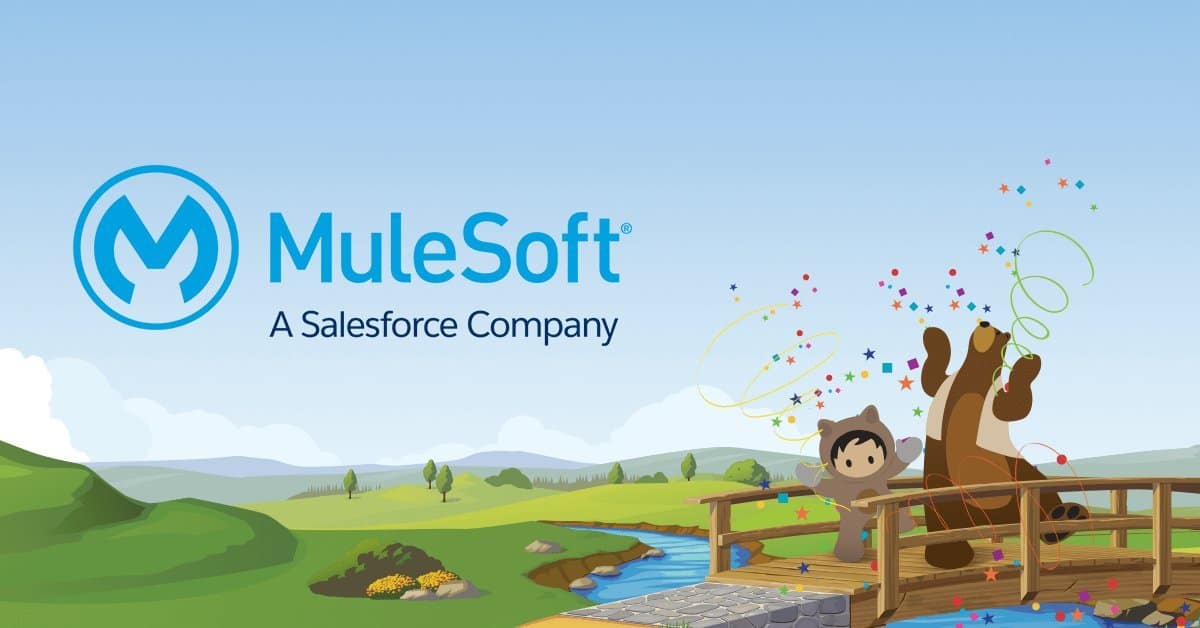
Within a year of acquiring MuleSoft, Salesforce has already made the necessary MuleSoft technology available within Salesforce. This allowed developers and administrators to make external APIs and data sources available within Salesforce. This provides an even better customer view, but also allows organizations to move more and more toward a single platform.
In 2019, after everyone had recovered from the acquisition of MuleSoft, the acquisition of Tableau followed. This company makes data insightful with tables and graphs. Tableau is great for data analysts and normal business users to gain more insight into company data.
Salesforce’s Customer Data Platform sees the light of day in 2020. This solution will then change its name almost annually. Salesforce Genie is perhaps the strangest of them all. Today, it goes by the Salesforce Data Cloud. This solution is very important in the company’s AI strategy.
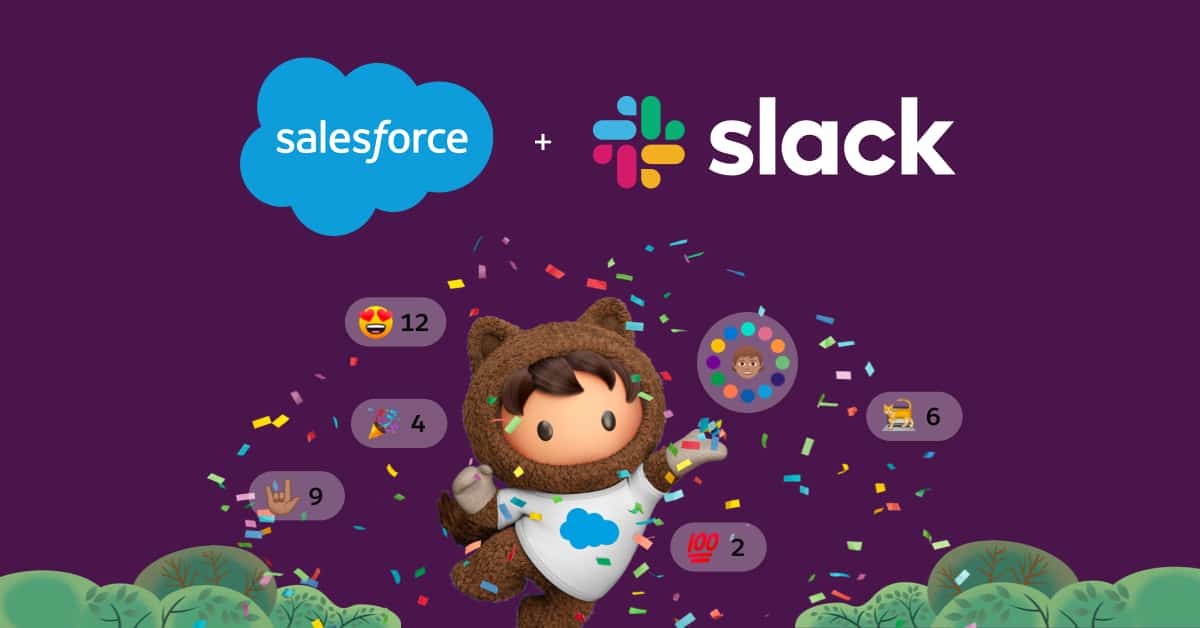
In 2021 Salesforce does the biggest acquisition to date, it buys Slack for $27.7 billion. Salesforce’s vision is that users want to do more and more from a single app, and Slack can be that digital headquarters. In recent years, integration between Slack and the various Salesforce components has expanded considerably. Slack also seems to be becoming a place where some slightly less successful acquisitions get another chance. For example, we are now seeing many features from Quip suddenly appear in Slack.
In 2023, Salesforce faces serious headwinds
In 2023, Salesforce first faced serious headwinds, and the board was challenged. Several activist shareholders bought large amounts of Salesforce stock and demanded changes.
At that point, Salesforce shares were down a lot and undervalued. Margins at Salesforce had also slumped significantly. The shareholders demanded a significant reorganization, the end of the 1-1-1 model and seats on the board. More demands were likely laid out behind closed doors, but they never came out in the open.
For Marc Benioff, this was extra painful because, for years, he has presented Salesforce as one big family, Ohana. According to him, the staff is family, and Salesforce is so successful because of the close relationship and collaboration. With those activist shareholders on board, Salesforce had no choice but to make the family much smaller. Ultimately, just over 10 percent of the staff had to leave. The 1-1-1 model also eventually survived this period; for Beniff, it was non-negotiable that they would end the 1-1-1 program.
It was the first time in 24 years that Benioff and the board were no longer entirely in control, and things got heated in the boardroom. In the end, Benioff was able to improve Salesforce’s results rather quickly; the stock price went up, and he was able to get rid of activist shareholders.
2024 and beyond
At TrailblazerDX, Salesforce’s developer conference, Salesforce celebrated its 25th anniversary. The organization now appears to be in excellent shape again. Salesforce has made great strides in AI. Where many other SaaS vendors are still searching for what AI features to add to their platform, Salesforce has developed a complete toolkit that lets customers build AI features themselves.
Salesforce has introduced the Einstein 1 Platform, which allows Salesforce Administrators and developers to build generative AI features. The platform also includes an Einstein Copilot, which can generate data at any time. More information about the Einstein 1 Platform can be found here.
Overall, Salesforce has a rich history, with many business successes which can be an example for many other organizations.
Furthermore, in addition to all its business ambitions, it is also making a huge commitment to the community. Its 1-1-1 model has now generated $676 million in charitable investments. Salesforce employees have spent 8.5 million hours volunteering, and 56,000 non-profits use Salesforce solutions.
Salesforce has now surpassed large enterprise software companies like Oracle and SAP, in terms of innovation and market value, it dominates the enterprise software market with SaaS solutions only. So more success is undoubtedly on the way.
